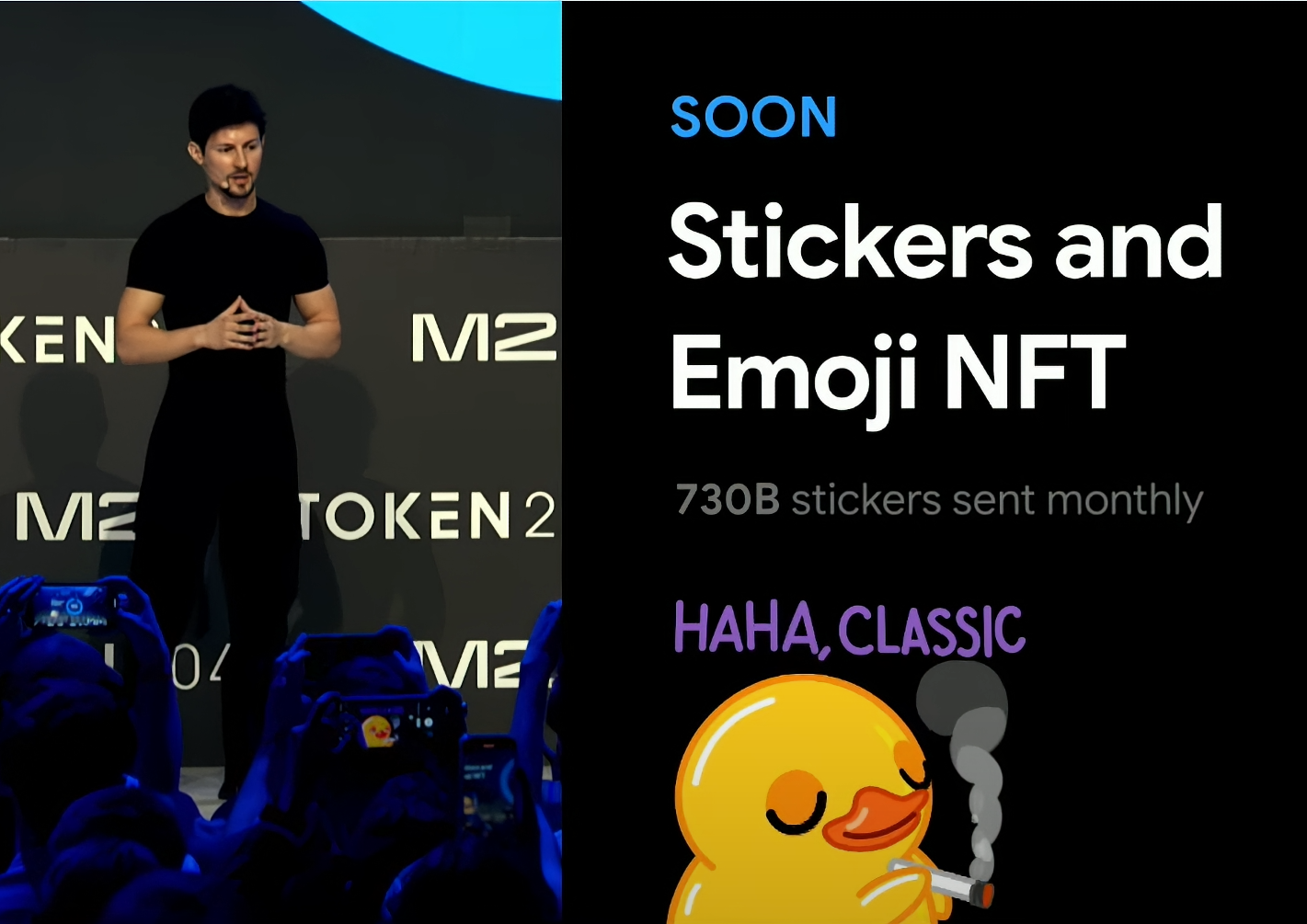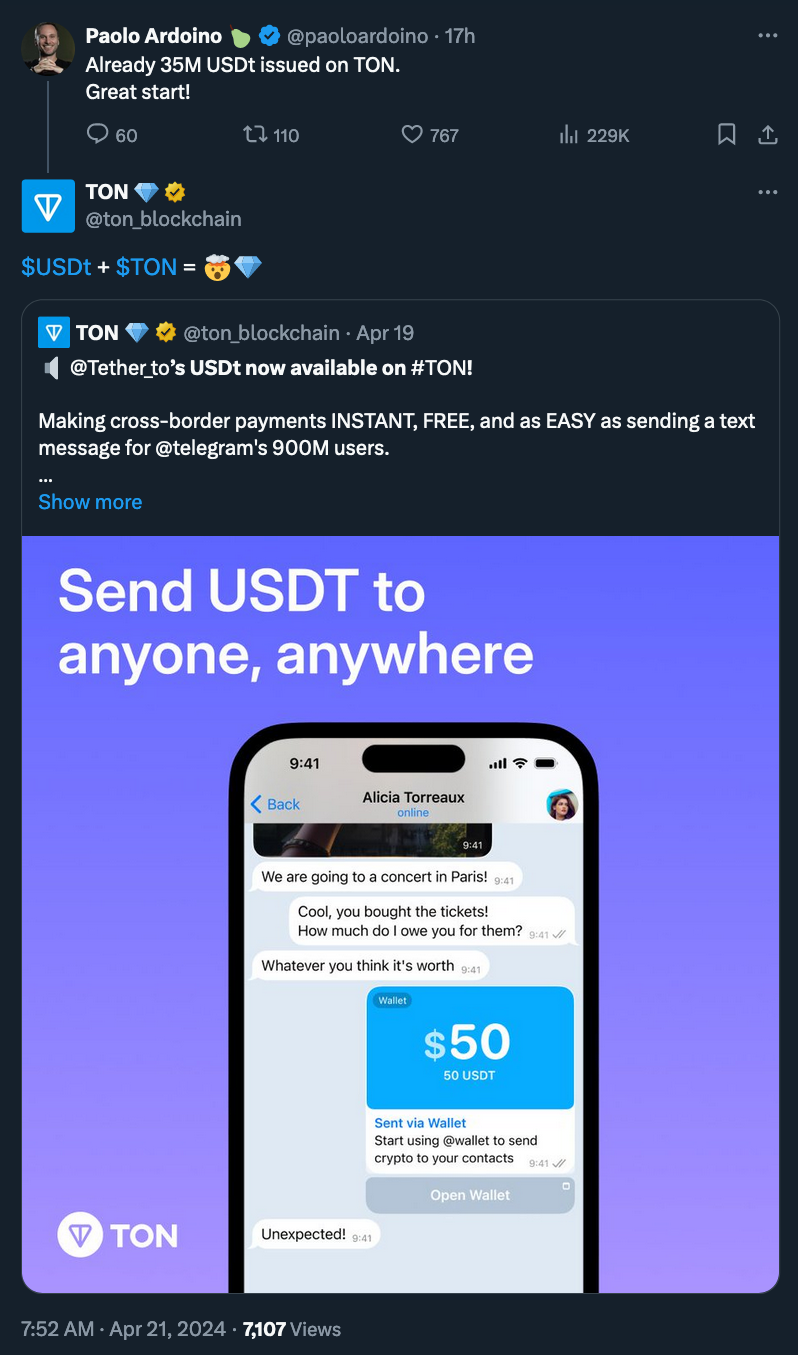Speaking at the Token 2049 event in Dubai, Telegram CEO Pavel Durov pledged the messaging app's future to blockchain technology, announcing plans to tokenize stickers, share ad revenue with users, integrate Tether’s stablecoin on The Open Network blockchain, and generally make Telegram a full-fledged crypto platform.

(Source: Token 2049 on YouTube)
Addressing a packed auditorium at the crypto conference in Dubai, Durov praised blockchain’s potential to foster freedom and privacy before detailing ambitious plans to expand functionality on The Open Network ($TON).

“The reason we love blockchain. It’s a technology of freedom. We care about freedom. Even our logo, the paper airplane symbolizes freedom to move in three dimensions.” (Durov on Token 2049 in Dubai)
The founder of Telegram, an app with over 900 million monthly users, said the company strives to enable users to build tools, apps, and businesses on Telegram. In his speech, Durov emphasized Telegram's different approach to monetizing its user base, contrasting it with other major social media platforms. Telegram also recently announced plans to share revenue with content generators on its platform through its Ad Network.
Durov also said that Telegram has already experimented with tokenization, starting with its user namespace, and outlined plans to tokenize the stickers available through the app. Further, Telegram intends to introduce features that allow users to buy crypto and physical assets, send tips to content creators, and even create and sell NFTs.
Developers will, in turn, be provided with tools to build mini-apps with monetization opportunities, transforming Telegram into a full-fledged robust crypto platform. Developers will receive 70% of in-app sales profits, while artists will earn 95% from sticker and emoji sales.
Using a blockchain protocol should allow Telegram to mitigate many restrictions associated with payment processing. Durov especially cited the scalability of the TON network, which can handle potentially tens and hundreds of millions of transactions. However, in parallel, Telegram plans to expand commerce capabilities for app developers and merchants by integrating 40 payment providers, including the likes of Stripe.
Following Durov's address, Tether announced the launch of its $USDT stablecoin on the TON network, facilitating easy transfers for Telegram's reported 900 million monthly active users.

Something unique about the TON and USDT integration is fixed fees capped at $0.15, irrespective of network congestion and trading volume, a focus on retail users, and, importantly, the ability to pay on-chain fees in USDT, making stablecoin payments a million times easier for crypto newbies.
While many projects are working on decentralized social media, Telegram's unique approach of integrating decentralized features into its centralized app is certainly an experiment worth watching.

